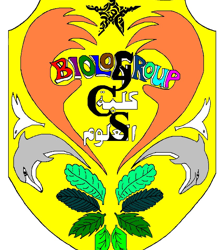ABSTRACT: Status of vitamin D and association with glycemic control in Omani children with type 1 diabetes mellitus: a case control study
Mohsen M.T. Al-Saleh; Dr. Saif Al-Yahharubi; Dr. Khamis Al-Hashmi; Dr. Ibrahim Al- Zakwani; Ms. Saud Al-Makhainya; Dr. Humood Al-Dhuhli; Professor Riad Bayoumi; Dr. Khalid Al-Rasadi
Department of Biochemistry; College of Medicine and Health Sciences (COMHS), Sultan Qaboos University (SQU), Al-Khoudh, Muscat
Introduction: An increased prevalence of vitamin D deficiency and/or insufficiency in patients with type 1 diabetes mellitus (T1DM) has been reported worldwide. Moreover, patients with T1DM and microalbuminuria have been reported to have lower vitamin D levels than those with normoalbuminuria. Vitamin D treatment has also been shown to improve glycemic control and insulin sensitivity in people with T1DM.
Objective: To estimate the level of vitamin D in T1DM. To correlate body mass index (BMI), glucose, HbA1C and urine vitamin D binding protein (UVDBP) excretion with vitamin D status in T1DM.
Method: We examined 67 subjects with T1DM, aged 9.7±2.5 yr. along with 65 healthy control subjects, aged 9.6±2.5 yr. We measured weight, height, body mass index (BMI), serum glucose, HbA1c, lipid profile, hsCRP, serum creatinine, cystatin-C, serum total calcium, urine creatinine, serum/urine albumin, vitamin D binding protein (VDBP) in urine and serum concentrations of 25-hydroxyvitamin D (25(OH) D). The results of 25(OH) D were compared between the 2 groups and investigated for relationships with glycemic control, BMI and UVDBP excretion.
Results: 25(OH) D deficiency (<50 nmol/L, equivalent to <20 ng/mL) was prevalent in both control subjects (49%) and T1DM (43%). In T1DM with HbA1c>7.5% (this stated as group 3) significant lower concentration of 25(OH) D was found compared to T1DM with HbA1c<7.5% this stated as group 2; (20±7 ng/mL vs. 25±7 ng/mL; P=0.030, respectively). Significant higher concentration of urinary excretion of VDBP was found in T1DM patients compared to control group (420,743±1144845 ng/g vs. 105,297±293309 ng/g, respectively; P=0.033) and non-significant higher levels of UVDBP in the diabetic subgroup 3 compared to diabetic subgroup 2. Vitamin D was found to correlate inversely with BMI, serum glucose and HbA1c. There was no significant linear relationship between UVDBP excretion and serum vitamin D. Positive correlation was found between urine excretion of VDBP and urine albumin excretion, glucose and HbA1c. Identified independent factors for urine VDBP excretion are urine albumin excretion, glucose and HbA1c.
Conclusion: In our study low levels of vitamin D were observed in both T1DM and control subjects. Vitamin D levels were not significantly correlated with glycemic controls. However; BMI was inversely correlated with vitamin D levels in the overall subjects. In addition, urinary loss of VDBP in subjects with T1DM worsened in the presence of albuminuria. Because VDBP is critically involved in the delivery of 25(OH) D to the renal epithelial cell of the proximal tubule for activation to 1,25(OH)2 D, therefore, urinary loss of VDBP might contribute to low vitamin D levels in T1DM.







